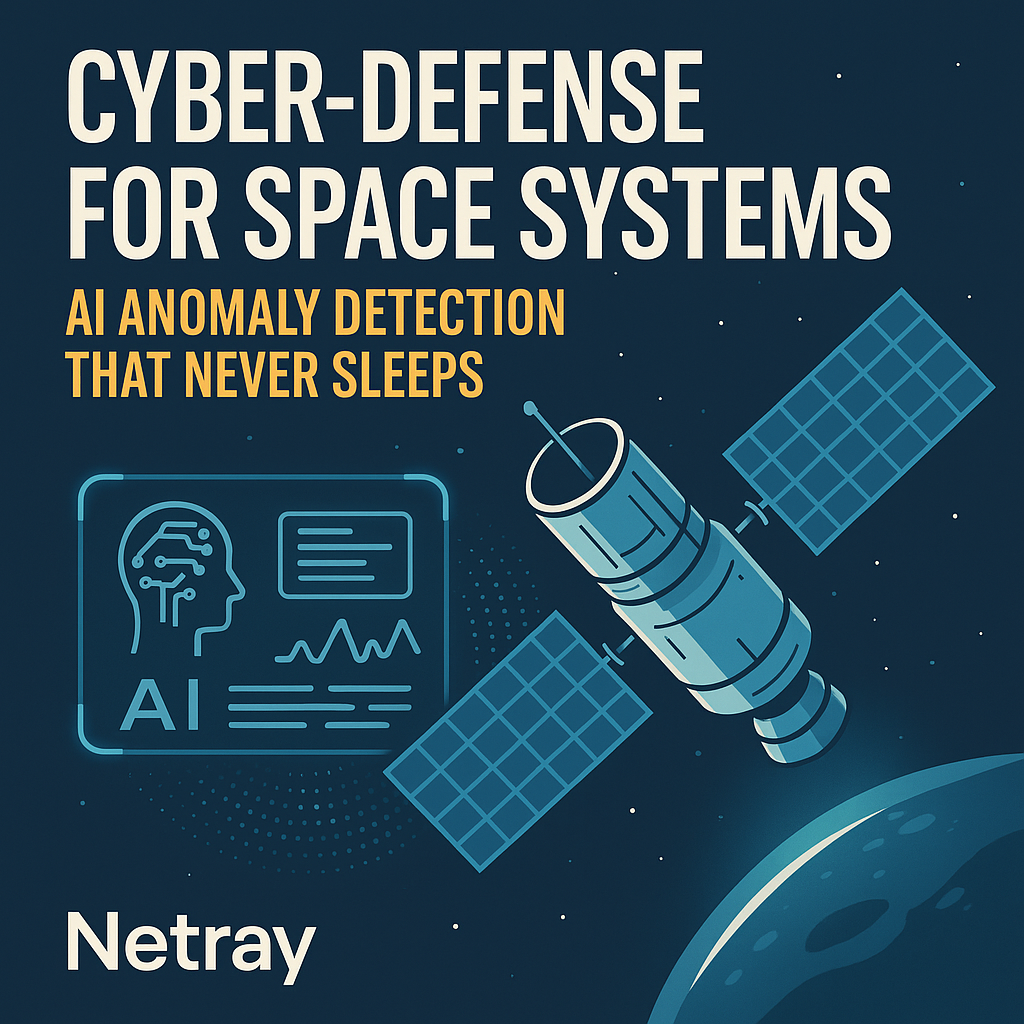Introduction
With 8,000+ active satellites and terabytes of telemetry flowing daily, space assets are prime cyber targets. Traditional, after-the-fact security can’t keep up. AI anomaly detection gives you continuous, sub-second visibility—catching subtle, malicious deviations before they become mission failures.
What’s changed in the threat landscape
- Unique constraints: No on-orbit patching or easy forensics—prevention and instant detection are essential.
- Deceptive failures: Solar radiation and EMI can mimic attacks; signatures alone aren’t enough.
- Modern vectors: Command/link hijacking, supply-chain implants, and telemetry/data manipulation.
How AI anomaly detection works
- Telemetry baselining: Models learn a satellite’s normal behavior across power, thermal, attitude, comms, and payload streams.
- Multi-temporal analysis: From millisecond command bursts to long-horizon orbital drift, AI flags out-of-family patterns.
- Hybrid ML stack: Unsupervised (isolation forests, one-class SVMs, autoencoders) + deep temporal nets (RNN/LSTM) for rare and novel events.
- Confidence + context: Alerts include likelihood, impacted subsystems, and recommended actions to reduce false positives.
Netray’s approach
- Real-time engine: Sub-second detection, <0.1% false-positive rate, and >99% monitored uptime for always-on missions.
- Adaptive learning: Mode-aware models (eclipse, station-keeping, payload ops) that evolve without drifting.
- Federated protection: Share learned threat patterns across fleets—without sharing raw mission data.
- Easy integration: CCSDS, custom TM/TC, REST; streams into SOC/SIEM and mission control with role-based access and full audit trails.
Where it’s used
- Constellations: Spot coordinated, low-signal anomalies across many spacecraft.
- Critical infrastructure: Command authentication checks, payload data integrity, orbital maneuver validation.
- Commercial ops: SaaS deployment that scales from CubeSats to GEO platforms—no heavy lift required.
Compliance & resilience
Aligned to NIST CSF and CISA space guidance, with reporting for ISO/IEC 27001. Road-mapped for quantum-resistant methods and autonomous responses when light-time or comms loss demands it.
Outcomes you can measure
- 95% faster mean time to detect (MTTD)
- 87% fewer false alerts routed to humans
- 99.7% monitoring availability
- Sub-second response for high-priority events.
Bottom line
Space is now a contested domain. AI-based anomaly detection gives you the only scalable way to monitor massive telemetry streams, separate physics from malice, and protect missions in real time.



